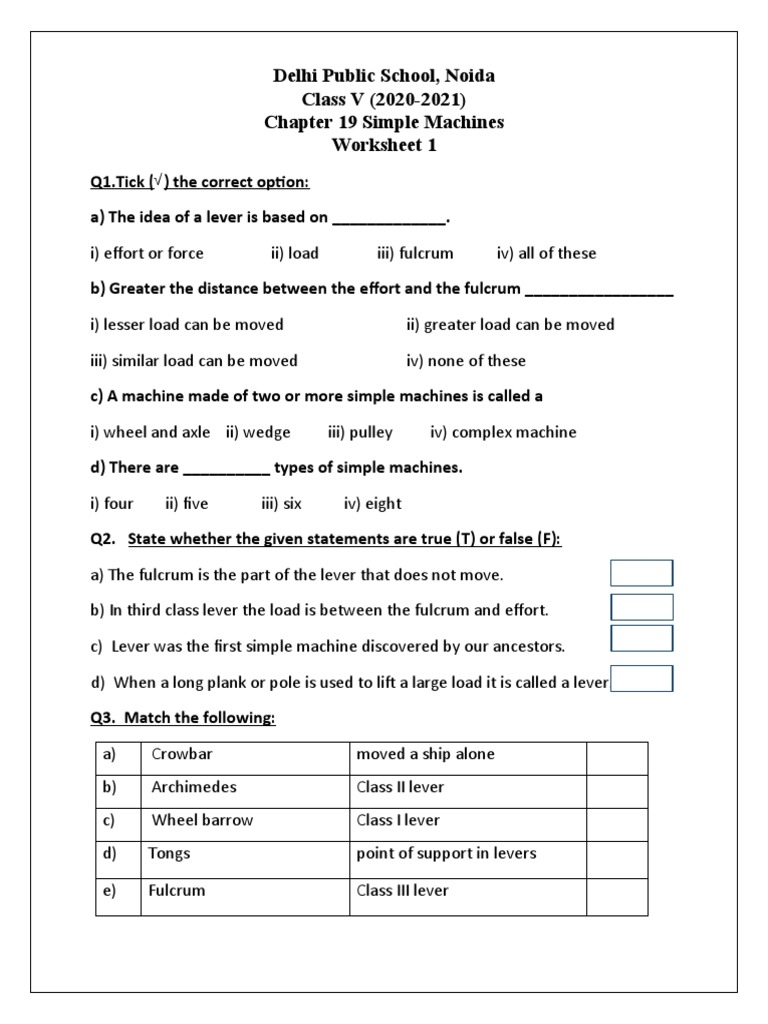Simple machines are the building blocks of more complex machines and are fundamental to understanding how things work in the world around us. They make our daily tasks easier by allowing us to apply a small force over a greater distance to accomplish work. By using a simple machines worksheet, students can engage in hands-on learning to deepen their understanding of these basic mechanical devices.
Worksheets are a great way to reinforce concepts learned in the classroom and provide students with a practical application of their knowledge. A simple machines worksheet can include activities such as identifying different types of simple machines, calculating mechanical advantage, and solving real-world problems using simple machines. This interactive approach allows students to see how these devices are used in everyday life and appreciate their importance.
Simple Machines Worksheet
One of the exercises on a simple machines worksheet may involve identifying and labeling various simple machines, such as levers, pulleys, inclined planes, screws, wedges, and wheels and axles. Students can also learn about the different parts of each machine and how they work together to make tasks easier. By visually representing these machines on a worksheet, students can better understand their functions and applications.
Another activity could focus on calculating mechanical advantage, which is the ratio of output force to input force. Students can practice using the formula for mechanical advantage and apply it to different scenarios to determine how simple machines amplify force. This hands-on experience helps students grasp the concept of leverage and understand the efficiency of using simple machines in various situations.
Furthermore, a simple machines worksheet may include problem-solving exercises that challenge students to think critically and apply their knowledge of simple machines to real-world situations. For example, students may be asked to design a simple machine to lift a heavy object or create a ramp to reduce the effort needed to move a load. These activities encourage creativity and ingenuity while reinforcing the principles of simple machines.
In conclusion, a simple machines worksheet is a valuable tool for teaching students about the basic principles of mechanics and engineering. By engaging in hands-on activities and problem-solving exercises, students can develop a deeper understanding of how simple machines work and their significance in everyday life. Worksheets provide a fun and interactive way for students to explore the world of simple machines and apply their knowledge in practical ways.
